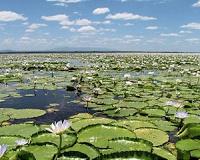| . |  |
. |
Washington (AFP) Dec 26, 2010 The April 20 explosion on an oil rig in the Gulf of Mexico that caused the largest environmental disaster in US history occurred because every defense on the BP-leased platform failed, The New York Times reported Sunday. The newspaper, which undertook its own investigation of the blast that killed 11 workers and injured dozens of others, said some of the defenses on the Deepwater Horizon rig were deployed but did not work, some were activated too late, and some were never deployed at all. Communications fell apart, warning signs were missed and crew members in critical areas failed to coordinate a response, the report concluded. The result was paralysis, The Times said. For nine long minutes, as the drilling crew battled the blowout that began in the BP well on the sea floor, with mud from the well gushing out of the top of the riser like a fountain, no warning was given to the rest of the crew, the paper noted. Crew and managers failed to immediately sound the alarm to evacuate, and for several on board the rig, the first hint of disaster came in the form of a blast wave, according to the report. The paralysis had two main sources, The Times said. The first was a failure to train for the worst. The crew members, though expert in responding to the normal scope of well and drilling problems, were unprepared for a major blowout followed by blasts, fireballs and a complete loss of rig power, the report said. They were also frozen by the complexity of the drilling rig's defenses, and by the policies governing exactly when they were to be deployed, the paper said. Deepwater Horizon was owned by Transocean, the world's largest operator of offshore oil rigs, which drills wells for BP. The company was focused on safety, crew members told the Times, and had provided the crew with a detailed handbook on how to respond to signs of a blowout, the report noted. But its emergency protocols, while urging rapid action, also warned against possible overreaction in the event of a crisis. Transocean defended the rig's crew. "They acted appropriately based on the information they had at the time," the firm said in a statement. "This world-class crew -- some of whom lost their lives -- battled to the end to gain control of the well." Other investigations had already uncovered details about the disaster, but most focused on what caused the well blowout, and the damage to the environment and businesses of the Gulf coast. The Times probe zeroed in on Deepwater Horizon's final hours. It interviewed 21 crew members, and pored over testimony or statements from nearly all of the other 94 survivors of the rig disaster. BP's Macondo well -- described as the "well from hell" by some workers -- had been behind schedule, and Deepwater Horizon was sent in to finish the job. The speed with which the crew was boring into the high-pressure reservoir may have led to some of the problems, the Times reported. The April 20 explosion toppled the giant rig into the Gulf of Mexico. Its collapse ruptured underwater risers, unleashing a torrent of oil that fouled environmentally fragile Gulf coasts for three months before it was finally capped. The Times investigation was published less than two weeks after the United States filed suit against BP and eight other companies for countless millions of dollars in damages from the massive spill.
Share This Article With Planet Earth
Related Links Our Polluted World and Cleaning It Up
 Mozambique's war-hit Gorongosa park slowly recovers
Mozambique's war-hit Gorongosa park slowly recoversGorongosa National Park, Mozambique (AFP) Dec 27, 2010 As warthogs play in the mud behind him, park ranger Charles Pereira Aranje scans the savannah for poachers, while waterbuck and reedbuck antelopes graze in the grass. Despite 95 percent of its wildlife being killed out during Mozambique's 16-year civil war, the Gorongosa National Park is back on its feet and Aranje, 62, who started working here in the 1970s wants it to stay that way. "Th ... read more |
|
| The content herein, unless otherwise known to be public domain, are Copyright 1995-2010 - SpaceDaily. AFP and UPI Wire Stories are copyright Agence France-Presse and United Press International. ESA Portal Reports are copyright European Space Agency. All NASA sourced material is public domain. Additional copyrights may apply in whole or part to other bona fide parties. Advertising does not imply endorsement,agreement or approval of any opinions, statements or information provided by SpaceDaily on any Web page published or hosted by SpaceDaily. Privacy Statement |